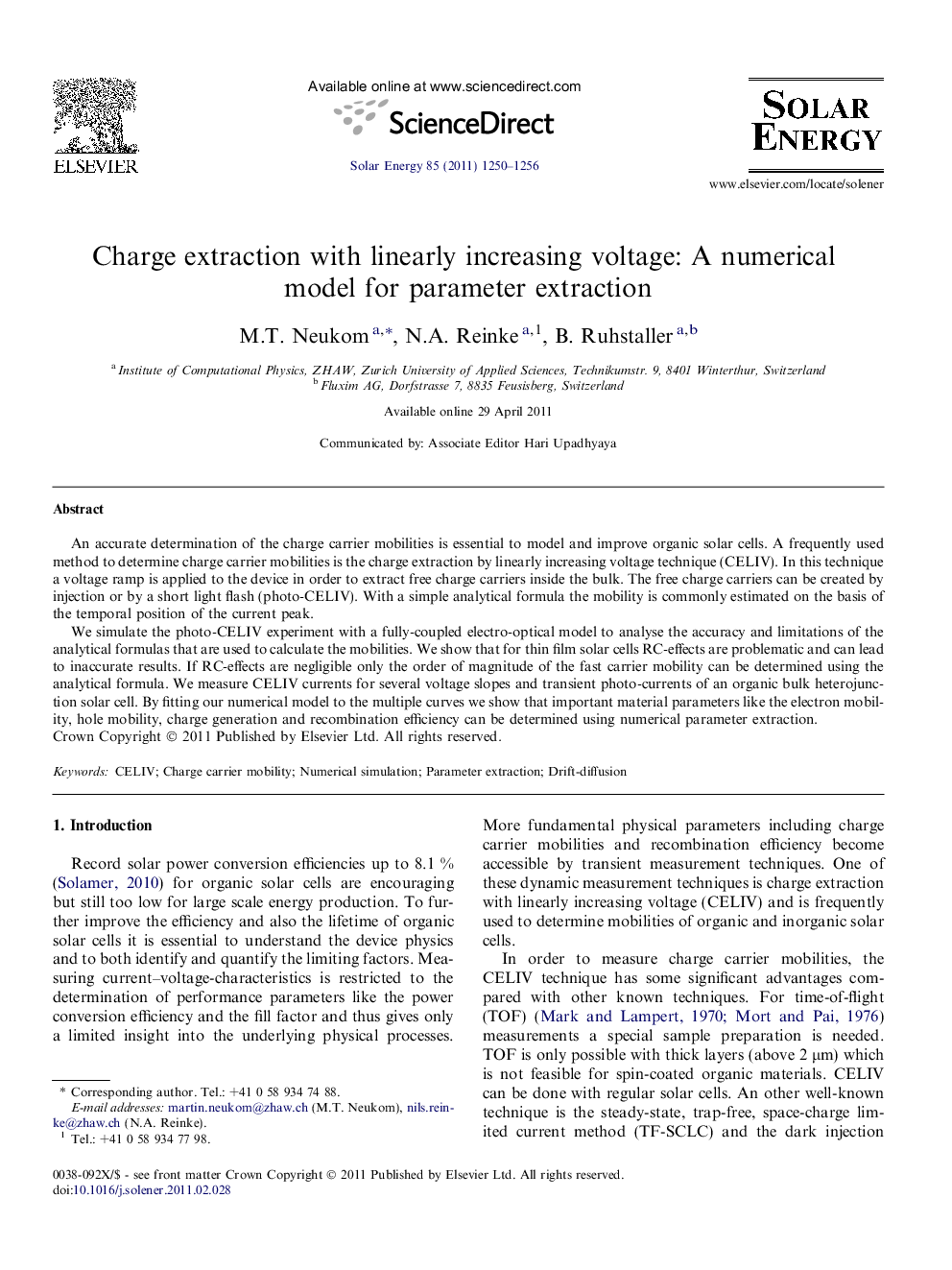| Article ID | Journal | Published Year | Pages | File Type |
|---|---|---|---|---|
| 1551177 | Solar Energy | 2011 | 7 Pages |
An accurate determination of the charge carrier mobilities is essential to model and improve organic solar cells. A frequently used method to determine charge carrier mobilities is the charge extraction by linearly increasing voltage technique (CELIV). In this technique a voltage ramp is applied to the device in order to extract free charge carriers inside the bulk. The free charge carriers can be created by injection or by a short light flash (photo-CELIV). With a simple analytical formula the mobility is commonly estimated on the basis of the temporal position of the current peak.We simulate the photo-CELIV experiment with a fully-coupled electro-optical model to analyse the accuracy and limitations of the analytical formulas that are used to calculate the mobilities. We show that for thin film solar cells RC-effects are problematic and can lead to inaccurate results. If RC-effects are negligible only the order of magnitude of the fast carrier mobility can be determined using the analytical formula. We measure CELIV currents for several voltage slopes and transient photo-currents of an organic bulk heterojunction solar cell. By fitting our numerical model to the multiple curves we show that important material parameters like the electron mobility, hole mobility, charge generation and recombination efficiency can be determined using numerical parameter extraction.
